Hi! It’s Jeanmarie. I received my transplanted kidney from my father in January 2006. I’ve had many ups and downs over the last 17 ½ years with this kidney. I had gained weight from a combination of medications and/or lack of exercise from not feeling my best. Via a transplant, we can go from having dietary and fluid restrictions to “freedom”. We finally feel free post-transplant. At least I did.
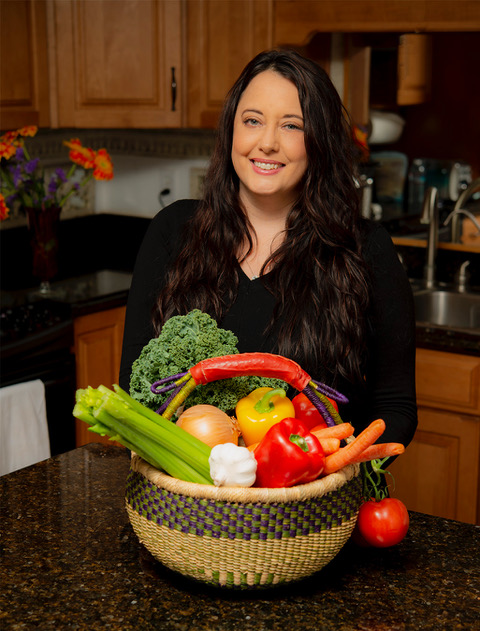
I was so excited to have freedom with food again. Then my blood pressure, cholesterol, and weight increased around year four. I decided I needed to take control of the situation.
I had done extensive research and talked to my transplant and care team about going on a plant-based diet. They all agreed it would be very beneficial. About 3 months in, I lost weight, and my blood pressure and cholesterol started coming back down. My kidney also seems happier. So did the rest of my body. I had the energy again to start exercising.
It can sound daunting to change the way you eat. But the benefits are so amazing that it is worth the effort.
Melissa J. Webb, MA wrote in her article on Helio.com, “Nephrology professionals may not routinely recommend plant-based diets to patients with kidney disease due to concerns over patient acceptance and their ability to follow the diet plan, according to survey results. The results, presented virtually at the National Kidney Foundation Spring Clinical Meetings, also highlighted a lack of patient knowledge regarding the benefits of such diets.”
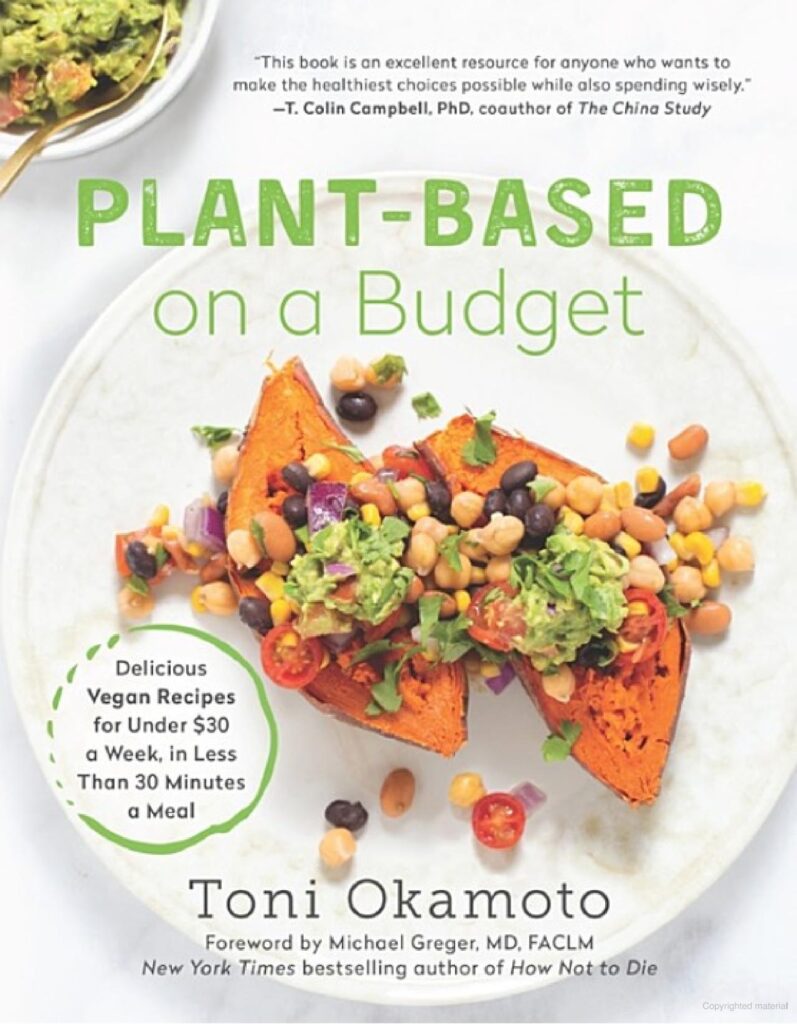
When it comes to starting a plant-based diet, there is so much information on the internet and on social media. Some of it can be so contradictory, making you even more confused on where to start. There is a book that I love called, Plant-Based on a Budget, by Toni Okamoto. (Not sponsored.) It helped me figure out where to begin. There are tips on how to meal plan and prep. It even gives you grocery shopping lists. I love how it taught me how to make balanced meals throughout the week, making sure to not overdo it on protein but get a nice variety of nutrition.
Throughout the years, I have added to the recipes or started to incorporate other recipes I find online so I don’t get bored. I usually pick a day of the week to meal plan and prep for the week. The benefits of meal planning are two-fold. You are less likely to go out to a restaurant or eat fast food and you are not spending tireless hours in the kitchen throughout the week.
I start my morning with black coffee and a smoothie. I like to use Orgain protein. I found that it is the best inexpensive one out there. My morning smoothie recipe is:

You can add or take away anything to the smoothie. In order to not waste any produce, I will prepare and freeze everything. I always have these ingredients frozen and ready to go. This keeps me full until at least lunch. It gives me energy and I don’t find myself wanting to snack.
Some of the challenges I have had with a plant-based diet is eating too much of the processed vegan meats that there are on the market. At the start of the pandemic, I started to notice some stomach issues. I evaluated what I was eating and realized I was eating a lot of frozen vegan meats. At the time, I was trying to minimize the need to leave my house. Once I started eating more cleanly, the stomach issues went away. I feel that with all the transplant medications, we are prone to stomach problems.
I also found over the years that eating strictly too many raw vegetables, my stomach also becomes unhappy. According to an article on the Livestrong website, “Raw vegetables can be difficult to digest due to their high fiber content. However, not fully digesting them doesn’t equal “no benefit.” If raw veggies are a problem for you, cook them first or make sure you’re chewing well enough to take stress off your stomach and intestines.” (Note: making sure the raw veggies are thoroughly washed is especially critical for transplant patients and others on immune suppressive medication.)

The new obsession that I have added to my daily diet is ginger shots. They take away my inflammation. Any joint or muscle aches that I have are also gone. Ginger helps with digestion, reduces cholesterol and lowers blood sugar levels. They make me feel like I am a new woman. I use the recipe on the right but there are so many out there with different variations. You can also add turmeric. Keep in mind only 1 per day. Any more than that can actually cause heartburn.
I have been eating plant-based for 13 years now. My labs usually look very good despite having obvious transplant issues. I still continue to have ups and downs. The medications that we take for transplant can be rough on the body and may cause all sorts of other problems. I’ve been able to keep my body as happy as possible by eating plant-based.
“The beauty of food as medicine is that the choice to heal and promote health can begin as soon as the next meal.”- unknown.
I am a 43 year old man. I reside in Louisville Kentucky. I am a one time kidney transplant recipient and I am looking for my second transplant. I have been working in the kidney industry for almost 10 years. I have worked as a volunteer, I have worked as a patient advocate for a transplant program here in Kentucky. I have spoken at variety of different patient roundtable discussions about all things Kidney disease. I am a family man, I have two kids, a daughter, Abigail 12 and a son, Zander 7. I enjoy watching baseball and all kinds of sports movies and podcasts. I am excited to be part of Transplantlyfe
May 24, 2023



I had my first kidney transplant on March 12, 2009, and from all perspectives, it was a great success!
It allowed me to go on to have a pancreas transplant (without a normal kidney function, it would have been hard to go through that very tough surgery), venture out to start a company (Lyfebulb), and conceive a child. Those were the highlights.
But let us not forget everything else that this kidney allowed me to do. First of all, it let me live. Without it, I would most likely have been on dialysis within a year or so, and the life expectancy of a diabetic person on dialysis is less than 5 years. I also traveled to many interesting places, got married, enjoyed new and old friendships, and participated in sports such as tennis and running during these 14 years.
So, to start, I want to thank my donor, my Father, for this life-saving gift.
However, for the past 3 years or so, my kidney has been in steady decline. Likely, some combination of Covid, the stress of the breakdown of my marriage, leaving Manhattan and setting up my life in an old but beautiful house in Westport, CT, balancing the roles of an entrepreneur and single mother, and the effects of the drugs that suppress my immune systems were all contributing factors. Most importantly, the fibrosis caused by tacrolimus truly put my kidney through the wringer. It is so sad that the very drug that is the gold standard for transplant patients (to avoid rejection) is also the one that causes decline of kidney function over time.
Over the past year, I started noticing a few things about my health that were troublesome. First, I was more tired and less social than before. I just didn’t have the energy to embrace situations I craved in the past. Luckily, my daughter is only 5, so she goes to bed early, and that allowed me to go to bed early as well. Importantly, I did not ever let this fatigue affect my attitude at work or the care taking of my daughter. But it did affect my health.
I was also much more sensitive to feeling cold. The only times I was really comfortable were in direct sunlight (which causes skin cancer in people like me) or in my sauna. I would sit in my sauna several times a day just to feel better. It did not do wonders for my iPhone’s performance when I brought it in with me.
It was painful to be this cold and it was due to my grave anemia, which was driven by kidney failure. Despite treatment with erythropoietin stimulating drugs, such as Aranesp, and even a blood transfusion, my hemoglobin would hover around 6-7 (versus a normal range of X – Y). Anemia also impacted my ability to do exercise, since my muscles would not get enough oxygen to function, and even my heart was struggling at high exercise levels.
During this year, I also went through several surgeries for my skin cancer, including one on the tip of my nose, which needed flap reconstruction by a plastic surgeon. He remarked afterwards that my clotting time was quite long. I explained that both my platelets were low and those I had were faulty, due to my low kidney function.
My family noticed my decline as well, and during the summer of 2022, my father asked me to speak to my middle sister, Lisa, who previously had offered to give me one of her kidneys (without me asking). As I was just 40 at my initial transplant, it had always been the plan that my father was to give me the first kidney, and then one of my sisters would give the second.
Lisa has always been of excellent health. She is 5’11’ and runs almost daily, has a resting pulse of 50, and is also an incredibly loyal and lovely person. Her children are 16 and 13 years old, so she was past the physically demanding baby years. I set up a zoom call with her, since I didn’t want to talk to her without seeing her. She immediately said, “I already told you I was going to give you a kidney”. It was such a relief for me that I didn’t even have to ask her.
I have heard stories from other people. Some people worry about that question so much that they avoid family gatherings and getting close to friends.
Now it was a question of when and how to coordinate some important events ahead of time. I needed to have a total hip replacement in August of 2022, and we were discussing whether it made sense to do the transplant before or after that, since that surgery would put additional stress on my kidney. I ended up getting the hip done successfully, but the stress of the surgery caused an additional drop in hemoglobin. So I needed a blood transfusion that September. This procedure gave me the “boost” to make it through the Fall.
Before that surgery and the corresponding impact, my nephrologist had wanted to wait to do the next transplant until my function had declined further. But I was feeling weaker and weaker, so over Christmas, we agreed to do the transplant over Easter, in April of 2023.
My sister Lisa works as a professor at a business school in Barcelona, Spain, and she needed to plan for a month of absence and also of course for childcare during the time she was going to be away.
We both got extensively evaluated from August of 2022, first with respect to matching our blood types, and then our tissue types, and finally making sure I didn’t have antibodies toward her. Our general health, mental health and social and financial support were evaluated as well, and I especially needed to be assessed from a cancer and infection perspective. I also needed to be up to date with respect to vaccinations and dental care as well as any cancer screenings.
Lisa was strong and passed with flying colors. While I had a nuclear stress test that flagged for potential heart blockage. The surgery required for a kidney transplant is serious and cardiovascular clearance is a critical part of evaluation. Since the stress test was abnormal, they required I undergo an angiogram, which involved using a contrast agent. I was very worried about this, since contrast is toxic to the kidney and I was convinced that the stress test was erroneous (I had always had a healthy heart). However, based on the upcoming surgery, and my many years with diabetes, they would not let me avoid the angiogram.
The day of the angiogram I was so nervous. I knew there was a huge risk involved here, since my kidney function was already only 12 percent, and I could not really go lower without extensive problems. My dad took me to the hospital and the procedure ended up showing no blockage; the stress test indeed was indeed erroneous.
However, the effects of the procedure kicked in. The sedation caused massive nausea in me. I could not stop vomiting for the next 24 hours. I tried to treat this at home, but could not keep anything down, and I had to go back to the emergency room the following day to get IV fluids and IV anti-emetics.
The interventions worked on my nausea, but the damage to the kidney was extensive. Between the contrast and the dehydration due to the vomiting, my poor kidney was in acute failure. Within a week I was in hypertensive crisis and severe uremia. My kidney function crashed to 5 percent. Dialysis was the only option for me to survive.
The symptoms I had experienced for the past year seemed like heaven compared to how I was feeling at that time. My head was pounding, I was severely nauseous, and my legs did not fit into any of my pants. My ankles were bloated and my face was unrecognizable. I was severely tired and depressed. I was hospitalized and emergency dialyzed for four days after getting a catheter into my neck vein to link to the dialysis machine that would save my life.
I have never in my life felt as bad as I did in the days before the dialysis. Although it saved my life, the sessions (9 in total, over three weeks) were pure misery.
Two things saved me: thinking about my daughter, and knowing I had to get well for her, and the transplant scheduled for April 13. I knew this was a phase that would endure, and once the transplant worked, I would feel much better again.
Writing about my experiences helped to keep me on track. I have always loved writing and it helped me keep my thoughts from spinning out of control.
My support system kicked in. My sister traveled to NY and came to visit me when I was in the hospital getting dialyzed. My friend and colleague, Leslie, brought food and amazing sweatpants to cheer me up. My family back in Westport were close in touch and took excellent care of my daughter. I truly discovered what a wonderful support system I have, from the mothers of my daughter’s friends to my amazing mother and father.
And we got dealt one more ringer. Shortly after her arrival for Easter weekend and final, routine pre-transplant donor tests, my sister was diagnosed with Covid! And she passed the virus to my parents. None of them had had covid for the past three years, but now they got it! I lost my family network of support for a week, while I was at my weakest.
I had originally been scheduled to do just three outpatient dialysis sessions after being released from the hospital. Now, I was worried about the timing of the surgery, which was deferred until a week later. I needed more outpatient dialysis (6 versus 3 sessions) to make it to the transplant. No one could stay with my daughter and me. My parents used masks and drove me to my dialysis and my daughter to school, and our nanny was very helpful in her support.
Ultimately, the surgery was moved to April 19, and I was as ready as I could be!!
Continue reading part 2 of Karin’s journey: The Dialysis Cleanse
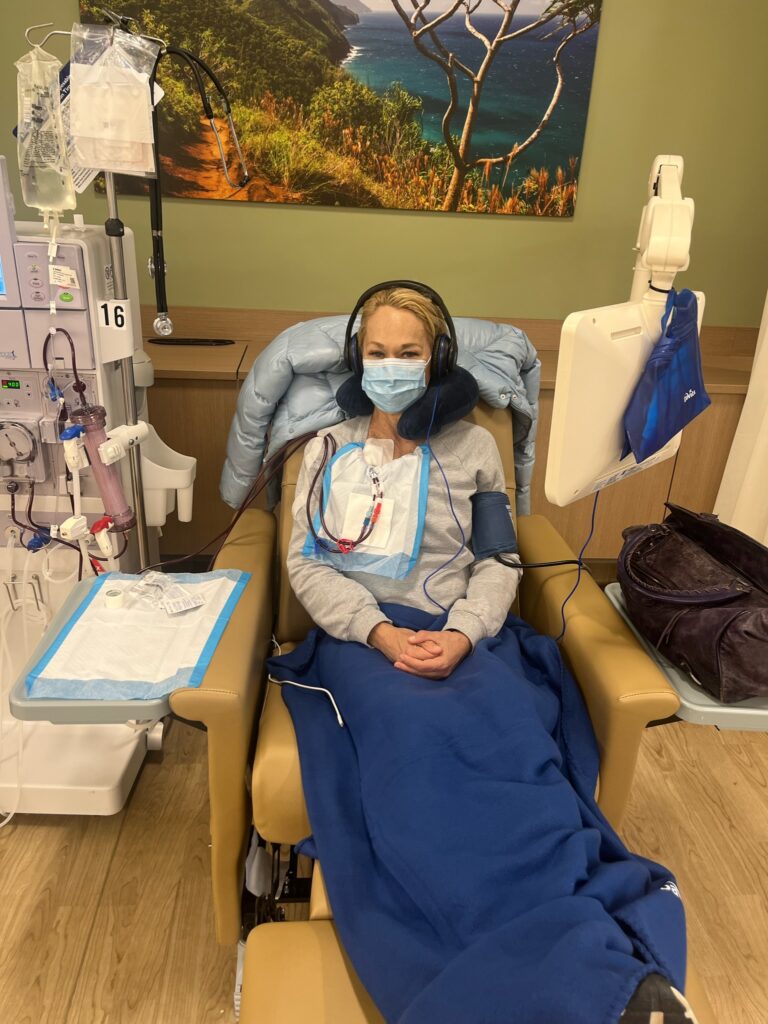

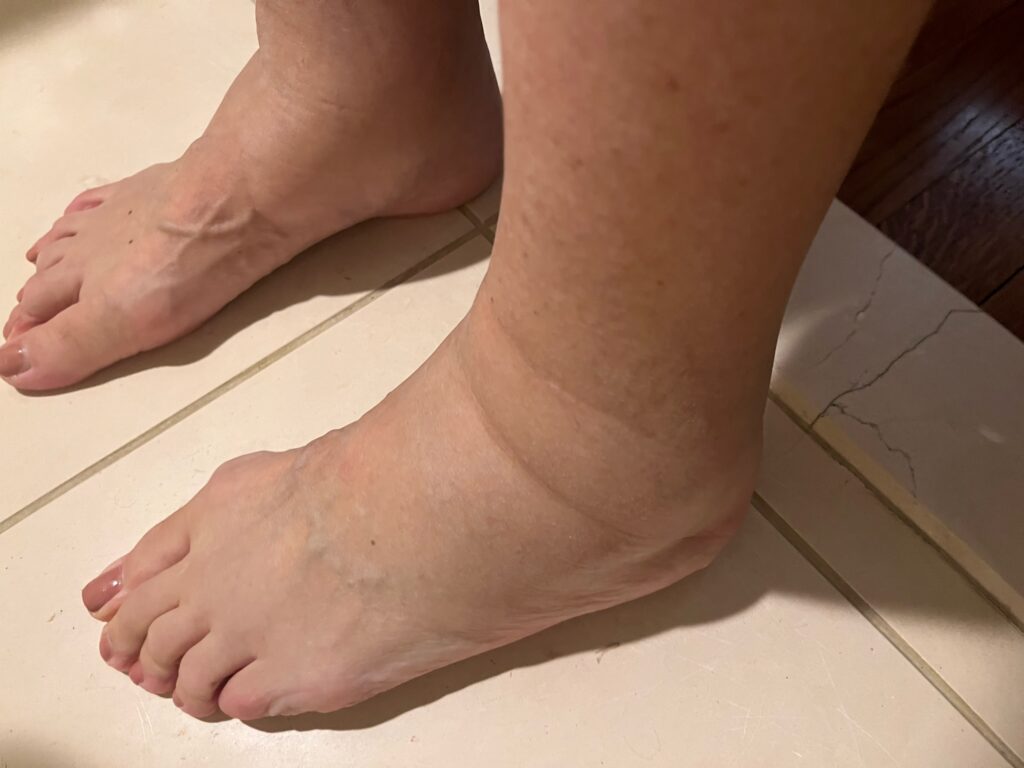
Since studying diabetes in medical school, I have been awfully afraid of kidney disease. The complications of diabetes both scare and fascinate me – so much that I went on and did a PhD in diabetic complications followed by a post doc at Harvard studying the same. I had an almost obsessive fascination with the issues I might face in the future, if I were unlucky.
25 years later I am on dialysis – the ultimate, final step in kidney failure treatment. Dialysis implies the kidneys are no longer working, even minimally, and a machine needs to take over the very important functions normally executed by those bean (or as my daughter has come to name them “croissant”) – shaped organs.
The kidneys do more than excrete urine. In fact, many of the functions are not well known to most, including their importance in blood pressure regulation, hemoglobin production (which carries oxygen to all tissues), calcium and phosphate metabolism and electrolyte regulation. However, what most of us know is that kidneys filter out toxins and break down certain drugs and compounds. That means that if the kidneys don’t work well, you literally become toxic (uremic) and those compounds that are meant to be broken down in the kidneys remain at very high levels in the blood.
I was facing dialysis in April of 2023, due to a few unfortunate events that can be seen as cautionary (and, by me, as detrimental). I had been planning my second kidney transplant for a while. I had lots of time to speak to my donor (my sister), get used to the idea of going through surgery again and plan for the recovery carefully. However, during my cardiac evaluation, an errant stress test triggered a confirmatory angiogram, which luckily was negative for blockage. But this test (angiogram) used a contrast agent which led to my kidney failing rapidly and acutely.
I started feeling very differently than before. My chronic fatigue that I was getting used to was worse. My sensitivity to cold was complemented by nausea, itching, persistent high blood pressure (sky-high levels), followed by headache and blurred vision. I was uremic and so swollen that my clothes did not fit, and I was very uncomfortable.
I had to be emergency-hospitalized, and right before my first dialysis session, I was more scared than I have been of anything in my life.
I had pictured the scenario many times, a machine taking over from my kidneys, vacuuming my blood out, filtering and cleaning it, then pushing it back into my vessels. I envisioned myself hooked to a machine, without which I would slowly die of internal poisoning.
The reality was that my first session was in a low-lit room at Columbia Presbyterian hospital, in a comfortable bed, with a Samsung screen in front of me, and a gentle nurse who took me through the process. Three hours later, I was rolled back to my room. It was not that bad!
I went through another two sessions in the hospital, one a day, which is very aggressive, but my toxicity levels were bad and I needed detoxification desperately to get ready for my transplant.
When I was released, I had to go to dialysis in an out-patient setting, and the scenario was very different.
I was now taken to a brightly lit, huge hangar-like room, with multiple chairs seated close by each other. I heard beeping sounds constantly and had very sick patients on either side of me. The personnel were friendly and one nurse offered me a fleece blanket, headphones and a few documents to read in my own time, and then she hooked me up to the machine.
The beeping drove me crazy, so I placed the brittle, plastic headphones over my ears (they barely covered the ear). The chair was one of those recliners that if you move the least, the whole thing goes horizontal; there is no middle step. And the blanket was flimsy, but appreciated. It definitely made me less cold since the environment gave me chills. During my first session, an elderly woman kept crying out “help me” every five minutes, until an ambulance came to pick her up. Next to me was an older man who had issues breathing. I tried to shut my eyes.
When I was done, three hours later, the nurse asked me to weigh myself again (a large scale sits at the entrance) to make sure enough fluid had been “taken off”. I felt wobbly and had a headache that was explained by the “electrolyte shift” that had taken place.
I bravely walked out to be driven home by my mother. I thought about those without family who had to go home by themselves after these sessions. The physical and mental trauma that had taken place do not set one up well up for cooking dinner, or driving a car.
That evening, I was truly exhausted. But the next day, I felt remarkably better! I enjoyed a healthy meal for the first time in quite a while without nausea, could go for a walk without fatigue and generally felt “cleaner”.
Dialysis is, for sure, not worse than death, which is what I had compared it to previously. But I reflect, surely there must be a way to improve the way the treatment is being given to the 550k patients on dialysis in the US?
Three times a week, 12 hrs a week: surely we can work on the setting and the use of time? How about some better chairs, lower light, privacy if wanted, and more sense of community if desired?
Kidney warriors are strong and determined, but we need education about diet, exercise and importantly, ways to get on the transplant list. We also need connections with others.
I hope I can contribute something valuable to the kidney community after spending these weeks in April on dialysis. I pledge to keep trying!
Continue reading part 3 of Karin’s journey: Day of Transplant Surgery


Today I received my new kidney, lovingly called, Croissant – Lisa.
My sister and I were driven to the hospital at 4:30am by our parents, Ulla and Michael. We were a strong team, and my father reminded us of the many trips the four of us had taken when Lisa and I were children. Conversation on the way into NY Presbyterian was light and the sun kept rising while we were approaching the huge complex of medical buildings.
Wearing blue paper masks, we all marched into the heart center which is where you register and wait together. My head leaned on Lisa’s shoulder when they first called her name, and she walked in bravely, together with our father. A few minutes later they called my name, and my mother and I followed.
Now followed hours of waiting with questions, IV placements, blood draws and consent signatures to get us ready for surgery that was going to take place at 8am for Lisa and three hours later for me. One of her kidneys was going to be removed and placed into my right iliac fossa (lower right abdomen/pelvis). Our surgeons were confident. Mine walked in stylishly outfitted in a suit and dress shoes, and I asked “Aren’t you dressed yet?” He answered, “I am dressed – PJs come on shortly.”
Before Lisa was given her sleeping potion, I had the opportunity to see her on the OR table and it brought tears to my eyes. Of course I had thought extensively about her gift to me, but never this concretely – this was tangible, palpable even. My little sister Lisa is going under, and being cut open, for me to survive.
She is my hero for life. She has always been extremely loyal and stubborn. She doesn’t give up and she loves big. I know that about her, and I also know she fights hard and pushes through pain. As she was lying on that table, she was beautiful. I wish I had taken a picture. She looked serene, even happy.
Back in my cubby, my mother and I kept waiting for my turn. I slept a little, and we talked a little. It was a nice way of waiting, and I appreciated my mother’s way of distracting me yet leaving me alone when I drowsed off.
When I was rolled toward the OR, my tears started again. I thought of Liv, my family and my life. I know the likelihood of mortality in these procedures is extremely low, but any surgery poses a risk. I don’t think it was that risk that made me teary-eyed though. It was the magnitude of the event and the many consequences that were all playing out in my head that caused the tears to flow: pain, graft failure, nausea, long hospital stay, cold OR, etc, etc.
On the table a few minutes later, I was treated so well by the nurses and anesthesiologists, who all addressed me as Dr. Hehenberger and gave me both respect and empathy. The Benadryl I had been given earlier, combined with the fentanyl they now infused, put me out almost immediately. It was many hours later when I woke up in the recovery ward with a kidney that already had excreted urine on the OR table! Croissant – Lisa had come alive inside my body, and I was delirious with joy.
I wanted to hug and kiss the world, and the doctors who came by all received my affections. Since I was lying down, I kept reaching for hands to hold and faces to smile at. My mask restricted me, but perhaps it was good to not show such a clownish smile to the world.
I am now facing four days of chemo light (thymoglobulin) and steroids as the induction therapy, while also getting my regular immune suppressants to make sure Croissant – Lisa doesn’t get rejected by my immune system. That is going to involve some side effects, such as higher blood sugars etc, but I am hoping I can keep that initial smile in my mind and push through the acute pain to eventually yield my goals, which near-term are to go home, kiss my daughter, hug my parents and other sister Anna, and toast Lisa – my hero.
Continue reading part 4 of Karin’s journey: The Gift
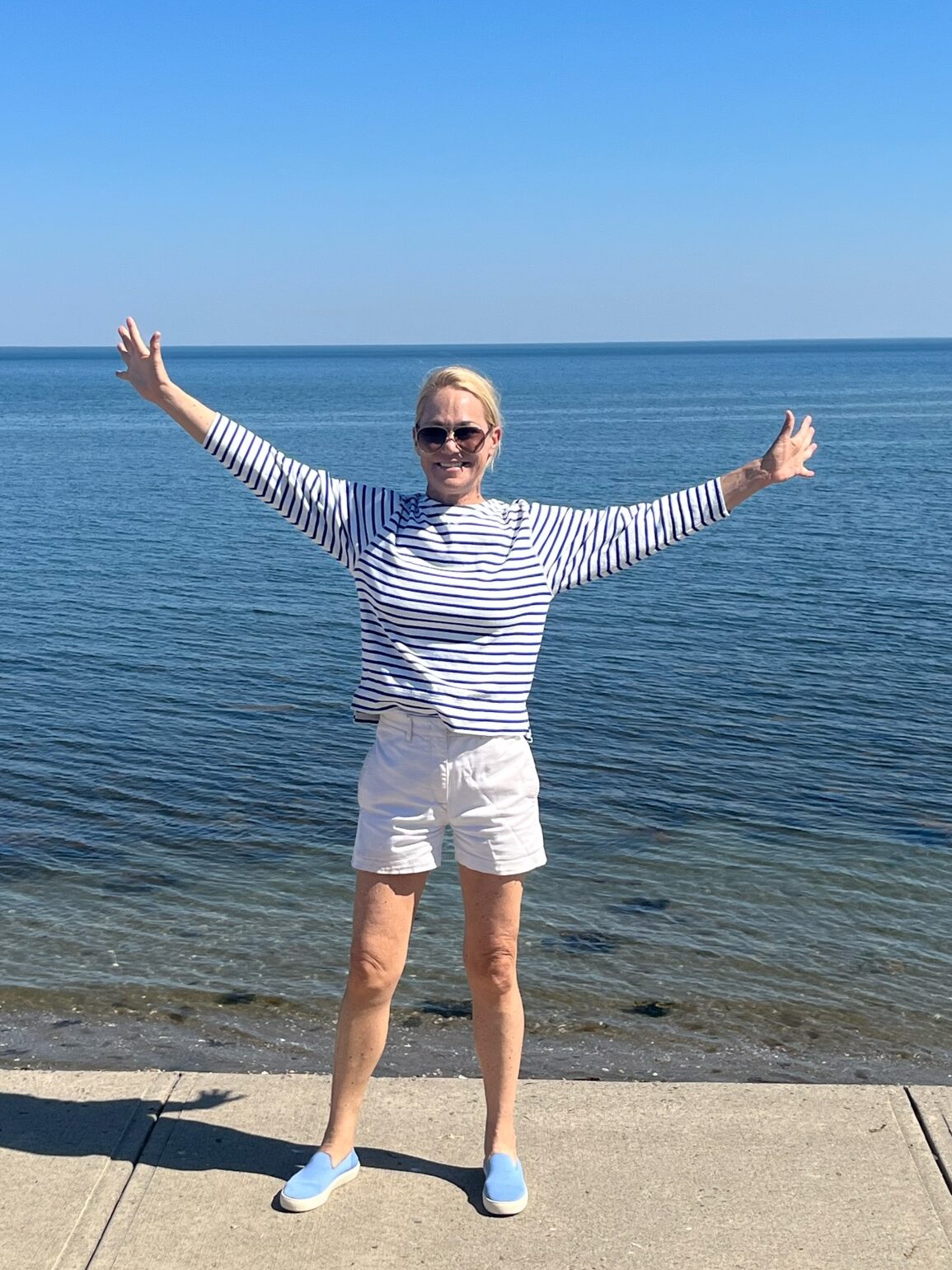
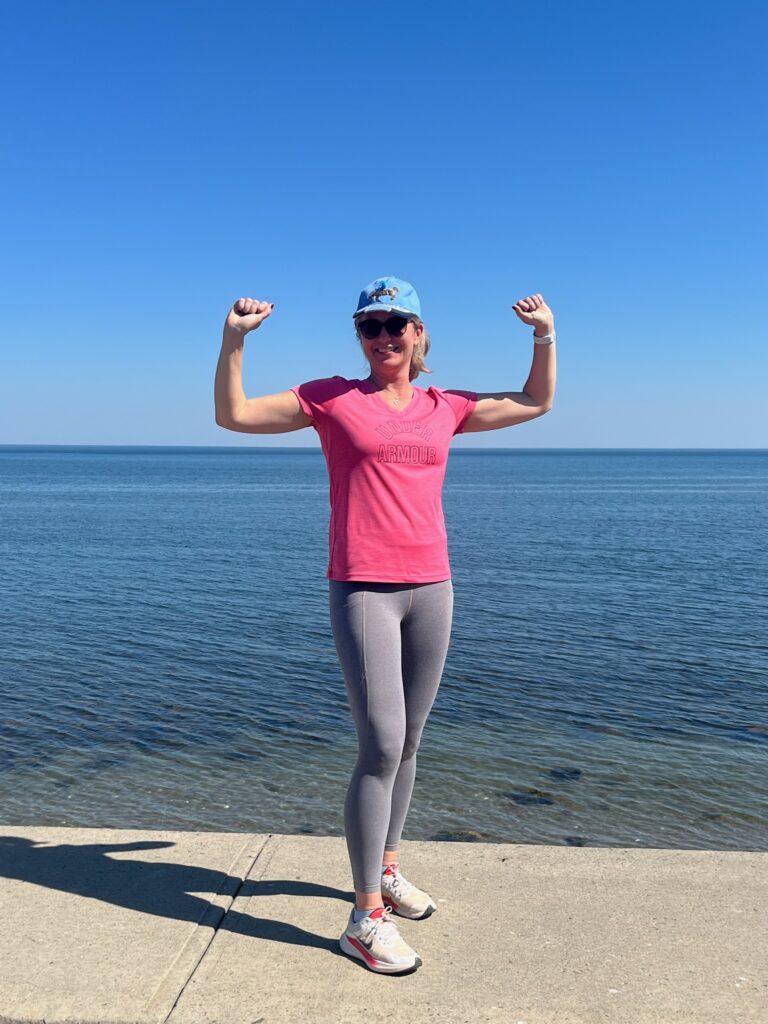
How do you thank someone who gave up a piece of themselves for you? How do you express gratitude for feeling alive again after a period of suffering enormous fatigue, nausea, fear and depression?
My sister and my father did this for me – they each gave up a kidney to save my life.
14 years ago, my father and I were on the table, and these fourteen years have enabled me not only to smile and hug my family and friends, but also to have a child of my own and start and build a thriving life sciences company that serves patients and promotes innovation.
This past week, my younger sister Lisa did the same for me. Her kidney came alive in my body immediately on the OR table and normalized my kidney values within two days of the operation. It is hard to describe my feelings and my energy levels other than as “hyper”.
I want to run, laugh, hug, scream and jump for joy. I want to bring joy to others, smiling to every person I meet, including the incredible staff at Columbia Presbyterian, led by the amazing Dr. Lloyd Ratner. He has assembled a team of surgeons, physicians, scientists, nurses, physician assistants (PA), technologists, social workers, occupational therapists, and other staff who work tirelessly under very hard conditions. They are heroes, together with the donors who give us recipients a second (or third) chance of life.
So what am I going to do with this gift?
I will live every day to the fullest, which doesn’t mean I will do as much as I can every day, but I will measure myself and take care of my new “baby” so that it can serve me as long as possible.
I will take care of my body by eating right, sleeping enough, exercising regularly and practicing mental health through meditation and mindfulness. I will be kind to myself when I feel tired, and I will be respectful to others and always keep in mind that the exterior of someone is not always a reflection of their inner self. I will cherish my friends who have stood by me through the hardship of kidney failure and dialysis.
I will continue to serve patients through my work. I will partner with great companies and leaders in academia to promote innovation. I will provide opportunities for my team to both grow professionally while also taking care of their families.
Above all, my life is dedicated to the family who saved me, and my own little family, whom I am raising with all of my heart. I appreciate each of my sisters, parents, brothers in law, nieces and nephews, and especially my daughter.
To my daughter, I want to show that life may not be a walk in the park – you need to fight for what you want – but it is beautiful. I want her to know that she will always be taken care of, and endlessly loved by, her Mamma.
